From Gavel to Gigabytes: ChatGPT's Groundbreaking Year in Law
In the beginning, there was code. A lot of it. Lawyers were wary of artificial intelligence. Still shrouded in the darkness of indecipherable black boxes and lambda calculus.
And then, BANG!
On November 30, 2022, came the launch of ChatGPT. It was a bit like watching a baby come to life and immediately take its first steps from the get-go. And this baby could talk... sort of. Regaling users with everything from bible verses opining on how to remove a peanut butter sandwich from a VCR (my still favorite) to spitting case law. Sometimes in the same sentence!
Today we're going back to day one of ChatGPT's journey and right through to its first birthday bash. Reminiscing about those not-so-distant, awkward days when ChatGPT gave legal advice that was more comedy than counsel. Like when it tried to interpret the Fourth Amendment and ended up discussing the pros and cons of pineapple on pizza (maybe that was just for me!)?
From there, our AI toddler grew in leaps and bounds and versions, oh my! We saw it start to tackle real legal queries with surprising insight when guided by a savvy legal prompter. The tech still has the occasional blooper, because nobody's perfect. But it has become a staple in some forward-thinking law offices, a topic of unending debate in others, and a source of endless fascination for me.
The last year has been a roller coast of creation, evolution, and a dash of legal shenanigans for this new AI-powered chatbot.

Hello World!
On November 30, 2022, Open AI kicked off what has become an AI Renaissance with the launch of its consumer grade AI chatbot, ChatGPT. But this story began years earlier with the natural language processing and large language models in the GPT family tree. the GPT (Generative Pre-trained Transformer) series of Large Language models built the foundation for CHATGPT and each of these iterations (GOT, GPT2.0, GPT 3.) was like a new chapter in the AI playbook. Getting smarter, sharper, and dare I say, more human-like with each version.
But then, on that fateful day in late 2022, ChatGPT entered the scene. It wasn't just another update; it was a game-changer. Built on the shoulders of GPT-3.5, ChatGPT came with a twist – it was fine-tuned to have more nuanced and meaningful conversations. And for those of us in legal tech, that was like striking gold.
Generative AI in ChatGPT was so accessible that anyone from your 5-year-old cousin to your 80-year-old Grandma could interact with the tech... and they did in the millions. Reaching a jaw-dropping and unrivaled 100M users by its second month on earth!
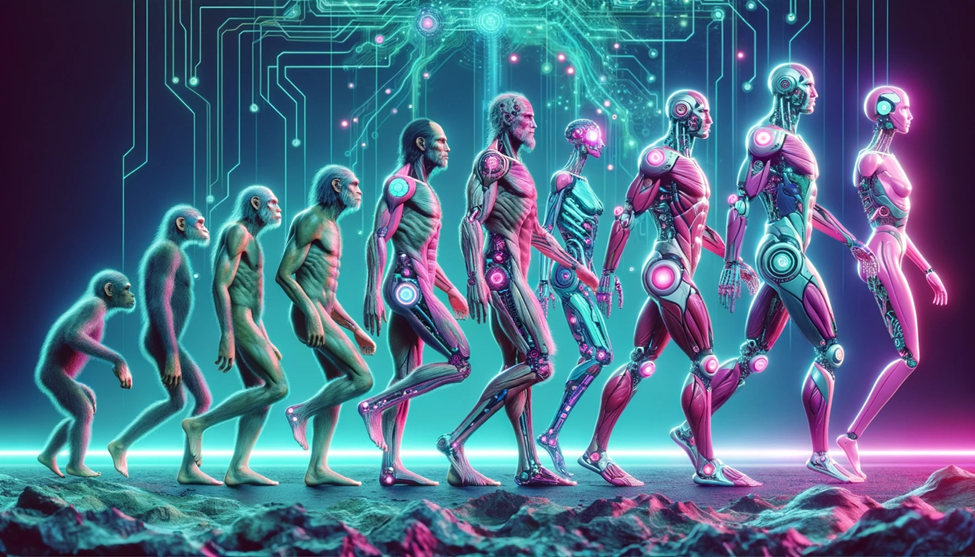
From Minor League to Mainstream
While still in its infancy, ChatGPT soared to the mainstream with $10 Billion capital investment from tech giant Microsoft and a rising tide of integrations with business-critical technologies. This capital injection helped drive a wave of more mainstream business technologies integrating ChatGPT and other GPT based algorithms and LLMs into legacy platforms.
In the same Month, ChatGPT passed both the bar and MBA exam, causing a whole host of people to worry that a robolawyer might take their jobs!
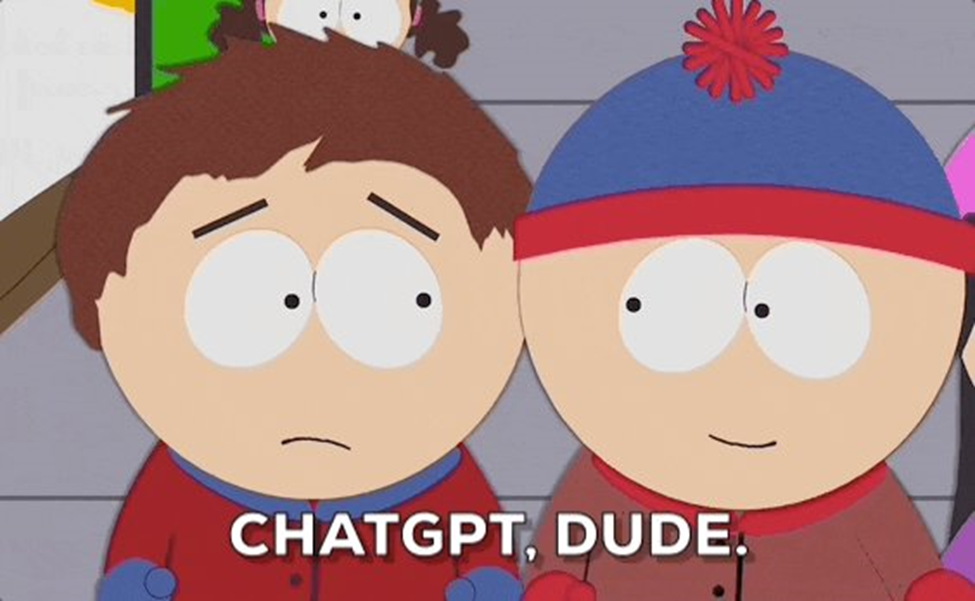
AI M’Kay- Generative AI Goes Viral!
They are saying goes you are not really famous until SouthPark roasts you! And by that measure, Chat GPT was famous for not only being roasted by but also writing a SouthPark episode at the trend age of just over 3 months. The episode focused on the transformative impact ChatGPT has on education and human communication, with a healthy dose of the mass hype around the AI System.
This pop culture inflection point established, for me at least, that this was not another Metaverse or Clubhouse. But rather something with as much potential to transform human discourse and information retrieval as the internet or computer before it. and at an accelerated pace!
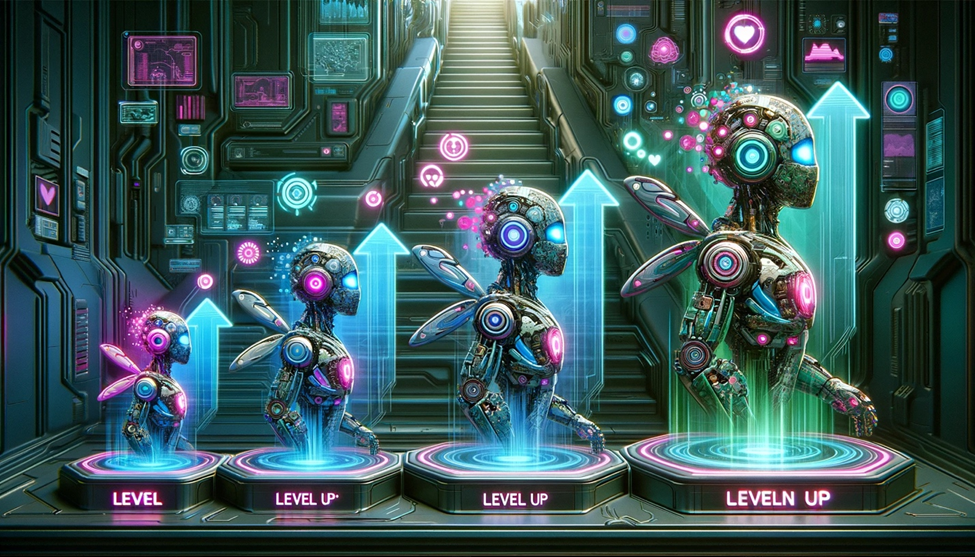
ChatGPT Levels Up with GPT-4
Hot on the heels of going viral with SouthPark, ChatGPT got a major upgrade with the release of a GPT 4.0 powered version. Smarter, more human and based on an even more supermassive data set, GPT-4.0 brought a whole new power to ChatGPT.
GPT-4 didn't just bring a little more 'oomph' to the table; it was a game-changer. We're talking smoother conversations that felt more like chatting with a colleague than a robot. It could handle complex legal instructions like a pro and kept the chat relevant and on point, even in those long, drawn-out discussions. And the best part? It's like a legal polyglot – flipping between languages without breaking a sweat.
With GPT-4, ChatGPT got a major brain boost. We're talking sharper, more on-point responses, and an uncanny knack for nailing the context. This wasn't just an upgrade; it was a transformation that had everyone from tech geeks to seasoned lawyers sitting up and taking notice. Adoption skyrocketed, and ChatGPT started popping up everywhere – from legal research desks to courtroom prep sessions. In short, GPT-4 took ChatGPT from being a nifty AI sidekick to an indispensable tool in the legal tech arsenal.

Robot Lawyer Rejected (in Court)
DoNotPay made waves earlier in 2023 by offering upwards of a million dollars for anyone to use their ChatGPT powered legal chatbot at the supreme court. Ultimately neither the justices nor regional court could get past the idea of a non-human performing unlicensed practice of law i a court room.
Ultimately DoNotpay’s gambit to use ChatGPT powered tech in both traffic court and the supreme court was foiled. But perhaps with a human in the loop that questions could be reopened!

Arrivederci Chat GPT, Ciao ChatGPT
Italy dropped the hammer on this AI chatterbox March 2023. Now, you're probably wondering, "Why, Italy, why?" Well, it all boils down to concerns about the potential misuse of AI-generated content and the need to regulate it to safeguard against misinformation (including hallucinations) and other risks. Italy decided to play it safe and hit the pause button on ChatGPT. It's a move that's got the legal and tech worlds buzzing with discussions about AI ethics and the balance between innovation and responsibility.
The decision came directly from the Italian data protection authority, Garante, who raised a red flag, molto serio, over the safeguarding of personal data when using AI models and AI software as their primary concern. Italy's actions sent shockwaves through the AI, GAI, and data privacy realms, setting a noteworthy precedent in the Western world.
Italy resumed ChatGPT access by the end of the same month once Open.AI added more robust privacy disclosures and controls.

Truth, Lies, and Hallucinations
But it wasn't all smooth sailing. ChatGPT had its fair share of hiccups – from hilarious misunderstandings of legal terms to occasionally straying into the realm of "creative" legal advice. But that's what made it so fascinating. It wasn't just a tool; it became a part of our conversations about the future of law and AI.
As the world at large and the legal community alike started using ChatGPT some natural failings of an algorithm built to predict the next best world began to arise. Much like an overeager intern or first year associate, the Generative Ai Chatbot aimed to please and deliver an answer the user may want. This resulted in responses not always based on reality. And in the case of a few unwary attorneys in the Mata v. Avianca case, a powerful lesson that ChatGPT is no match for the 1 trillion synapses of the organic computer between each of our ears.
At a few days shy of 6 months old, ChatGPT found itself in legal hot water. Attorneys in a personal injury case were caught citing false cases hallucinated by ChatGPT and doubled down then the judge called them out on it. This legal snafu, ultimately more a result of incompetent lawyering and shirking of an ethical duty to supervise and technical competence caused many in legal to pause.
But the parallel surge of new AI tools and GAI tools being released by legacy tech like Google and Lexis-Nexis as well as the new AI-companies popping up in legal tech with a nearly daily frequency showed the tech was not in the least slowing.
Ethicists and influencers (like yours truly) advised a trust but verify approach, or what my good friend Kassi Burns of King and Spalding calls “AI in the loop.” A workflow or approach where the human is in the driver’s seat and AI is operated under the guidance and guardrails of human insight.

Siri Meet iChatGPT
On May 15 the spread of ChatGPT went from exponential to astronomical with the addition of an iPhone app for ChatGPT in the iTunes store. In an instant, a massive portion of the 1.49 Billion global iPhone users were now just a swipe away from ChatGPT and the transformative impact on information retrieval LLMs and Generative AI models pose.
The broad accessibility and user-friendly interface of ChatGPT has driven the platform to over 1.5 Billion visits per month. Android released a ChatGPT app two months later. Since the addition of ChatGPT to mobile devices i have quickly found that my default search engine has, after 25 years of Google conditioning, been replaced in short order by ChatGPT.
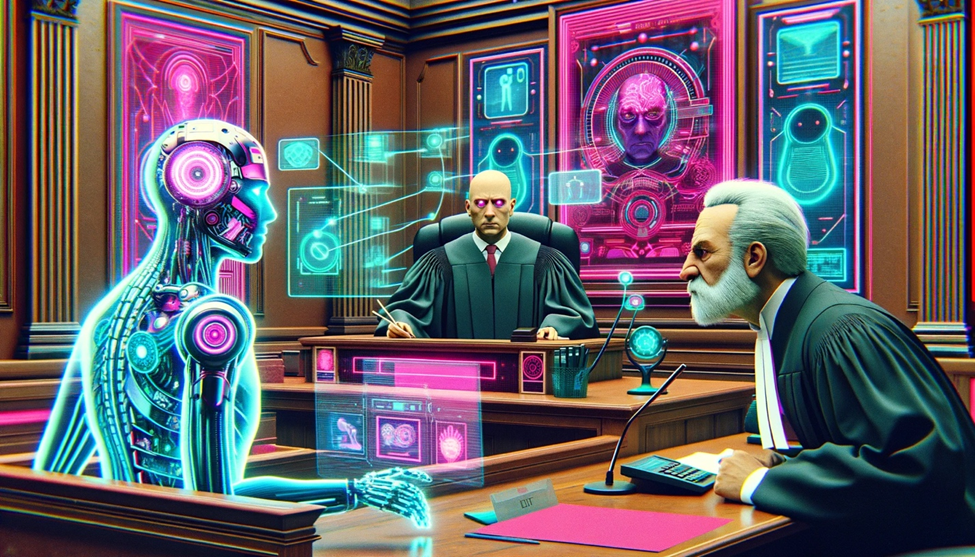
ChatGPT Gets Benched (Sort of)
On ChatGPT’s half birthday, the first of several judicial orders relating to the use of AI was issued. The first order, Issued by Judge Starr focused on the need to certify that a cite check the content of orders with traditional databases. Other subsequent orders have gone from quite broad requirements to certify if any AI was used (ahem do we need to disclose Google or the GPS to get to court) to more Generative AI specific to mitigate the risks posed by cases like Mata v. Avianca.
throughout the month and the remainder of year one AI standing orders proliferated the federal courts with some frequency. As of November 2023, 14 courts have issued some standing order on the use of AI. Judge Stephen Vaden of the Court of International Trade, Magistrate Judge Gabriel Fuentes of the Northern District of Illinois, and Senior District Judge Michael Baylson of the Eastern District of Pennsylvania—received national attention.
- Vaden’s order focused on confidentiality and disclosure. Making sure those who tinker with generative AI spill the beans and solemnly swear that they haven't let any proprietary AI cats out of the bag.
- Fuentes’ order makes litigants 'fess up about using generative AI, but there's no certificate here. Instead, for accuracy's sake, Fuentes trusts in Fed. R. Civ. P. 11, which demands that arguments in a filing must be "warranted by existing law" and comes with a penalty for those who don't play by the rules.
- Baylson went the most rogue of the three - mandating that the use of ANY AI be disclosed and certified as accurate. A different judge upon reading this order quipped by its broad terms, Bayslon’s order “directs counsel to reveal the use of seemingly innocuous programs like Grammarly.”
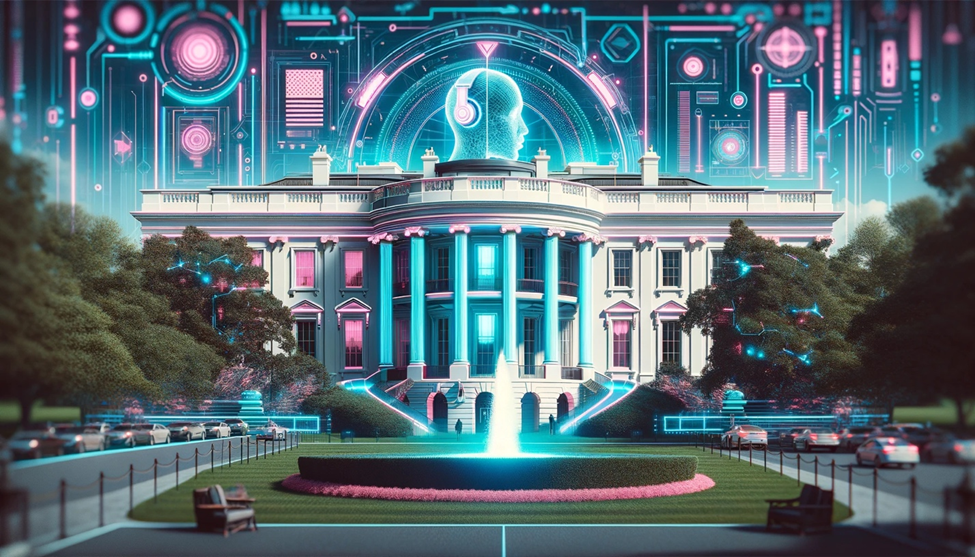
ChatGPT Takes on the Oval Office
Spurred on by the GAI renaissance precipitated by the birth of ChatGPT to the mainstream, the Biden Administration released Executive Order 14110, 'Safe, Secure, and Trustworthy Development and Use of Artificial Intelligence.’ This broad order has swept onto the scene with all the swagger of a Hollywood blockbuster! Setting the stage for taming the AI frontier but also gives a direct mandate to government agencies, instructing them to regulate the use of health AI systems and tools while providing guidance for AI innovation across all sectors, including the pivotal health and human services domains.
Simultaneously, the Office of Management and Budget (OMB) unveiled a draft memorandum, essentially the script for this AI spectacle. It directs departments and agencies, spelling out new requirements for AI governance, innovation, and risk management, complete with specific minimum risk management practices for AI use.

A Picture is Worth 1000 Words
In September 2023, ChatGPT went beyond words and phrases to integrate with Dalle to generate images using generative ai from within the ChatGPT user interface (most of the images in this blog were generated that way!) This leap forward poses additional challenges for legal professionals as we battle a proliferation of deepfakes and claims of deep fakery. 2024 and beyond will certainly involve increased authentication and validation when it comes to written and visual evidence because of the power and ease of use in creating visual content.
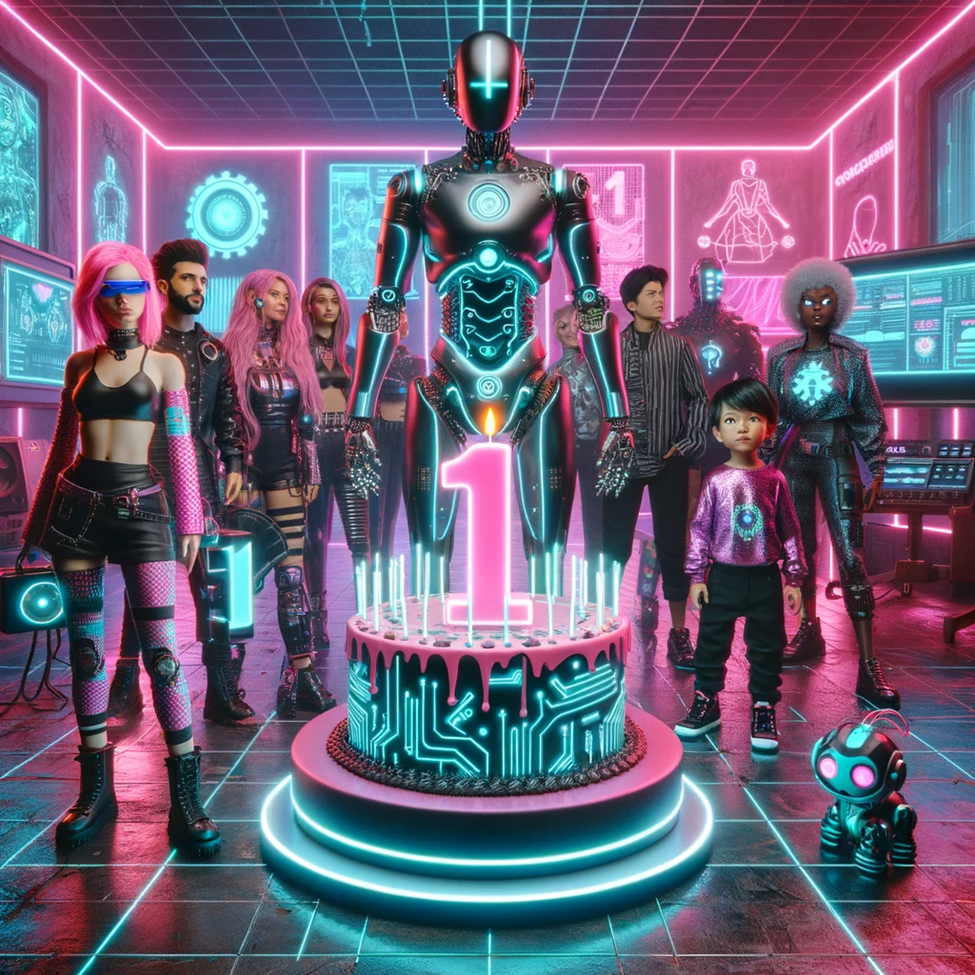
From Scrappy Startup to Tech Titan
Riding the GAI tsunami, this scrappy startup soared to a potential valuation to as much as 90 Billion in less than a year. Integrations with Lexis Nexis, Westlaw, Ross, LexMachina, and more. Other flavors of generative Ai LLMs powered by GPT technology have also been integrated into powerhouses like Google, Bing and more.
In just a year, ChatGPT has done the legal tech equivalent of a superhero transformation, going from a nifty startup to a full-blown tech titan. It's not just impressive—it's downright revolutionary. We've seen it morph from a cool tool for drafting quick emails to a powerhouse that's shaking up the legal landscape. Whether it's streamlining legal research, drafting documents, or even offering up some innovative solutions to complex legal puzzles, ChatGPT has become a non-negotiable asset for forward-thinking legal pros. This isn't just growth; it's a paradigm shift in how we approach legal tech, proving that AI isn't just a buzzword—it's a game changer. ChatGPT's story is not just a tech success; it's a beacon, illuminating the untapped potential of AI in the legal field.

